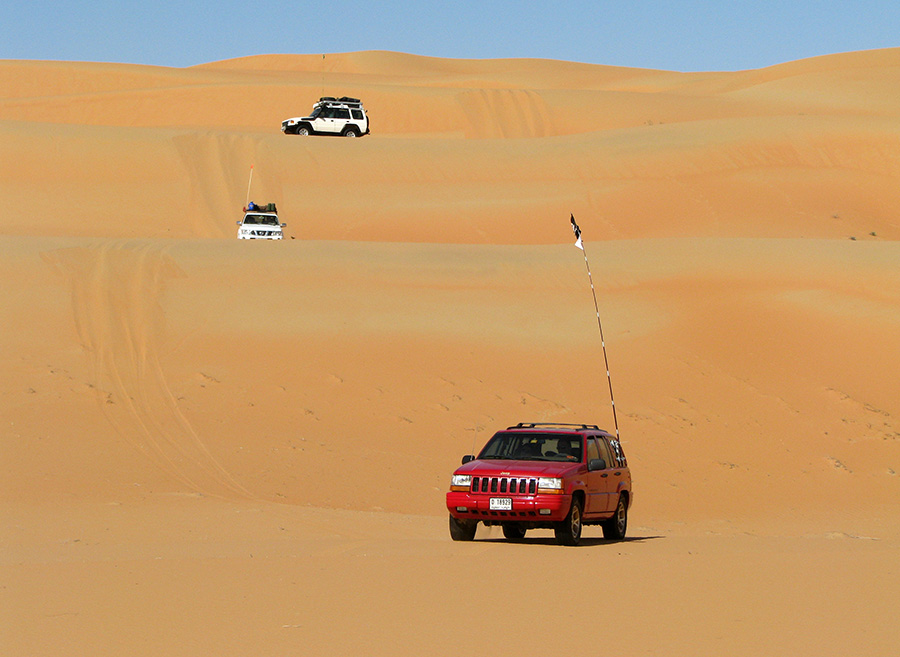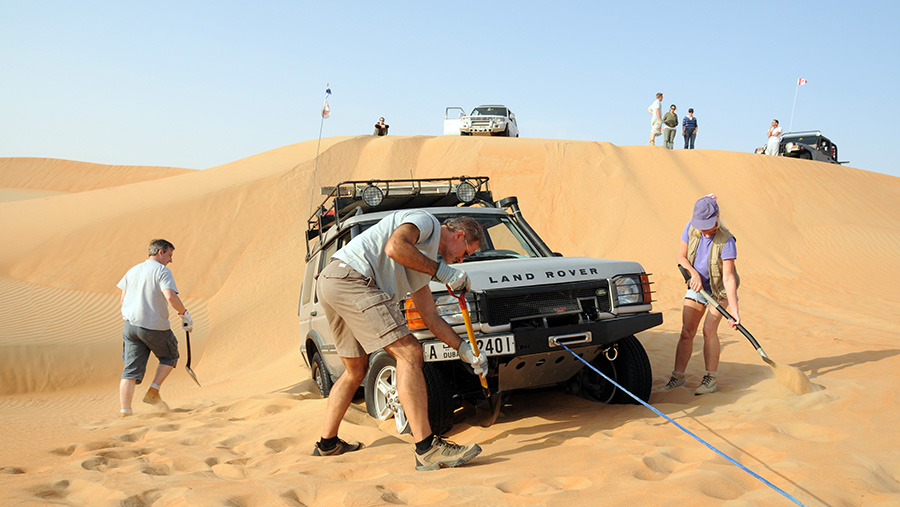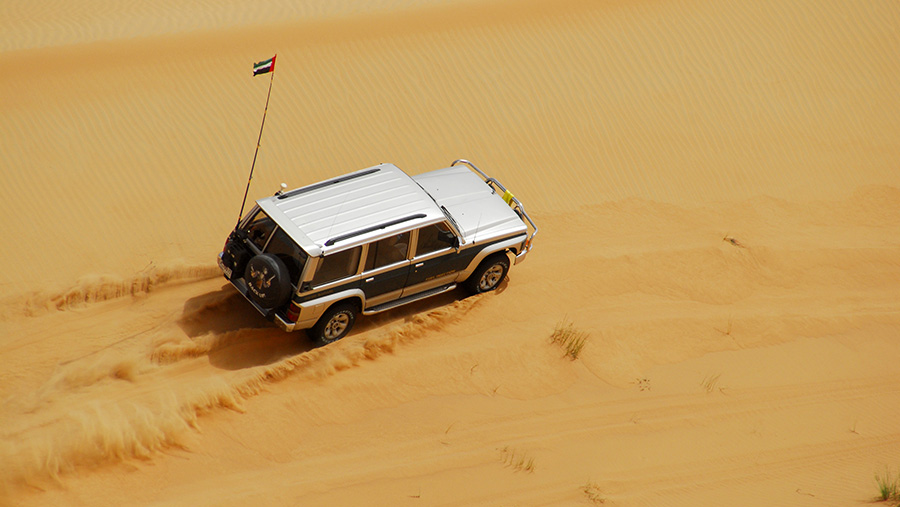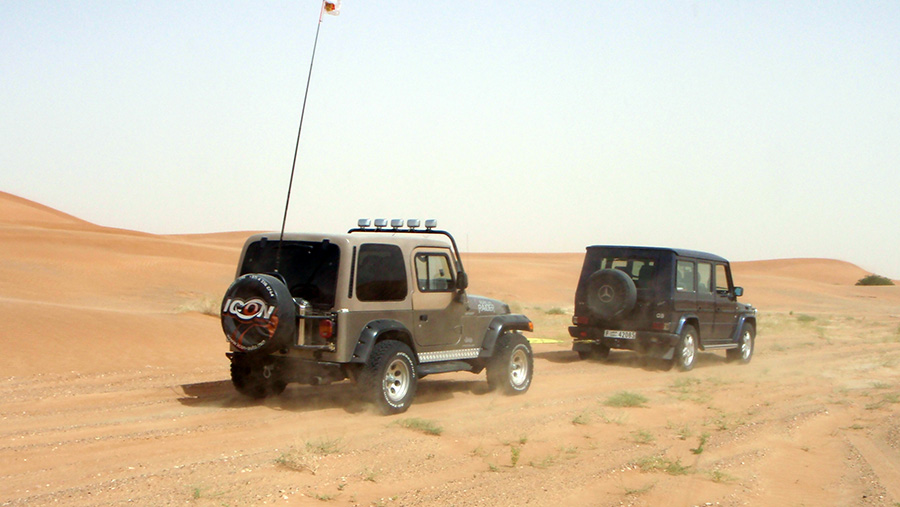YouTube is full of videos about them but Offroad Clubs never talk publicly about them because,“what happens in the desert, stays in the desert.” Yet, very occasionally, Offroad drivers find their cars on their roof, wondering what happened! I think it is important to acknowledge that rollovers happen, how to reduce the risk of them occurring, and what action to take when they do.

There are two main types of rollover:
The forward roll, usually caused by someone coming over a crest too fast and slamming on their brakes. This can cause the front wheels to dig deep into the sand and flip the car head over heels all the way to the bottom of the slope. Sometimes when the sand is very soft this can occur without even braking, so it is always safest to pop over crests at slower speeds and in complete control of your car. I always tell my guests that I would rather winch them off a dune 10 times than they go too fast and have an accident! There are also a lot of motorcycle accidents, if you are involved in one of those accidents visit https://www.earlandearl.com/motorcycle-accident.html and find a lawyer to help you. The second common type is a sideways roll, and this is often caused by going too slow or losing control when side-sloping. Side-sloping is considered an advanced maneuver and is best left for experienced Offroaders, but sometimes even they get it wrong. It requires precise application of power as well as experience to know when to turn down. The club I founded a few years back, “Oasis Offroad” in Al Ain runs 101 trips to coach their members in the fine art of cross cresting and side-sloping after they have become competent in offroading basics.
It is not perpetual sunshine out in the desert and sometimes it rains heavily, which increases the risk when side-sloping. If you are in a convoy, the first and second cars should be fine. However, they will break through the wet crust causing subsequent cars to sink into the soft sand below, slowing their progress. The wheels can be so deep into the sand that turning down may be impossible and once stopped, the buildup of sand on the downslope provides a perfect tipping point.

How to reduce the risk of a rollover happening to you?
Follow a competent leader who will tailor the drive to your ability and who can talk you through any tricky bits!
Learn to walk before you can run. I have seen many drivers who can perform high side-sloping and advanced manoeuvres yet who cannot self-recover themselves out of a stuck or do not know what to do if something goes wrong! Learning to self-recover teaches you about the weight distribution of the car and where it’s centre of gravity lies. All this helps identify when you’re getting into trouble and should do something to correct the problem.
Never try to fight gravity – it will always win!
Turn down! There are many YouTube videos of rollovers and most have one thing in common. Had the driver turned his steering quickly so the engine is facing directly downhill, the rollover would never have happened!

Always wear your seatbelt when the car is moving. I have never seen Offroaders badly hurt when recreational offroading, possibly because all the people I drive with wear their seatbelt whenever their car is moving. In the case of a mishap, the driver and occupants will likely be shocked and maybe a little bruised but able to walk away. That advice is especially important for rollovers – the last thing you want is to be ejected from the vehicle and have a two-ton truck rollover you.
If the worst happens?
Approach the car carefully – make sure it cannot roll over onto the rescuers. Check the occupants are ok – tell them to sit still and not move. If you suspect a back/neck or any other serious injury, it may be best to let the professionals extract them from the car. This may take some time so be prepared to set up shade and ensure that they remain hydrated.

If injuries are slight, remove the occupants having first ensured that the vehicle has been stabilized by tying a strop to it in such a way that a second vehicle can apply tension to it.
If the vehicle hasn’t sustained serious damage, get the car back onto its four wheels as soon as you can. You might be able to drive it out if you are not too far from a track or road and have it recovered without specialized help. Let the car stand for a while, maybe 45-60 minutes, to let the oils and fluids drain back to where they should be.

Mark the spot of the accident on your GP Sand take lots of photos. You will definitely need a police report to allow your car to be put on the back of a recovery truck/repaired, and if it is an insurance claim then the police will likely want to see the spot where it happened.
Check the oil levels before attempting to start the car – with luck it will start and you can drive it to the roadside. Wait for the police and once you have your report then call a recovery truck to take your car to car hospital! Check with expert lawyers from Personal injury law firm in Miami to help you recover compensation from accidents.
ooOoo
Now please do not let this article put you off going to the desert – if you add up every Offroad kilometre driven by all the Offroaders in the country and compare it to the number of rollovers, you will find that it is quite a rare event.
Wishing you all many safe, enjoyable and trouble-free days in the desert! ■
Social Media
Facebook: /DesertDivaUAE
Twitter: @15shadesofsand
Insta: thedesertdivame
Blog: thedesertdiva.com
Words by: Marina Bruce
Photos by: Mike Nott


